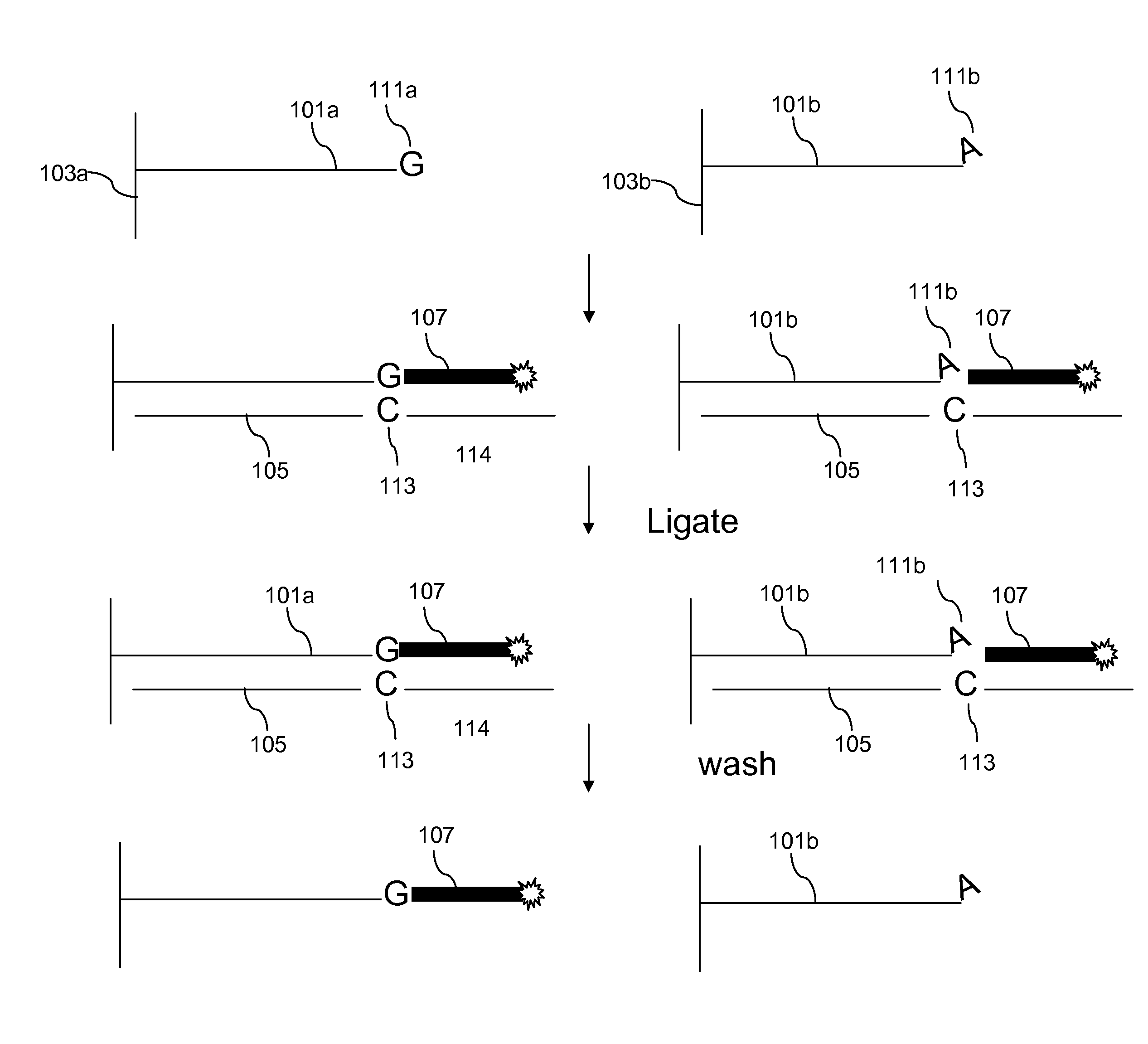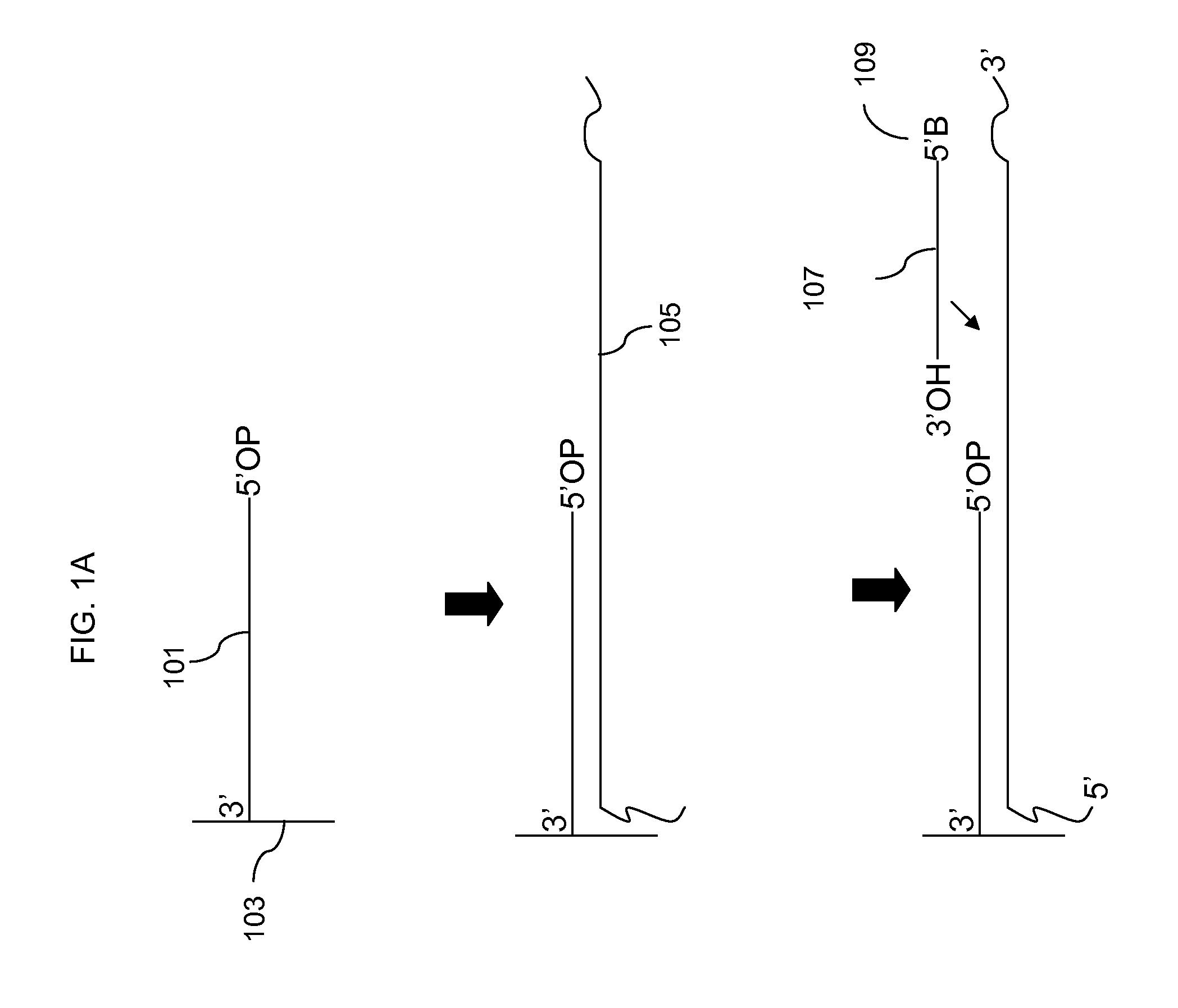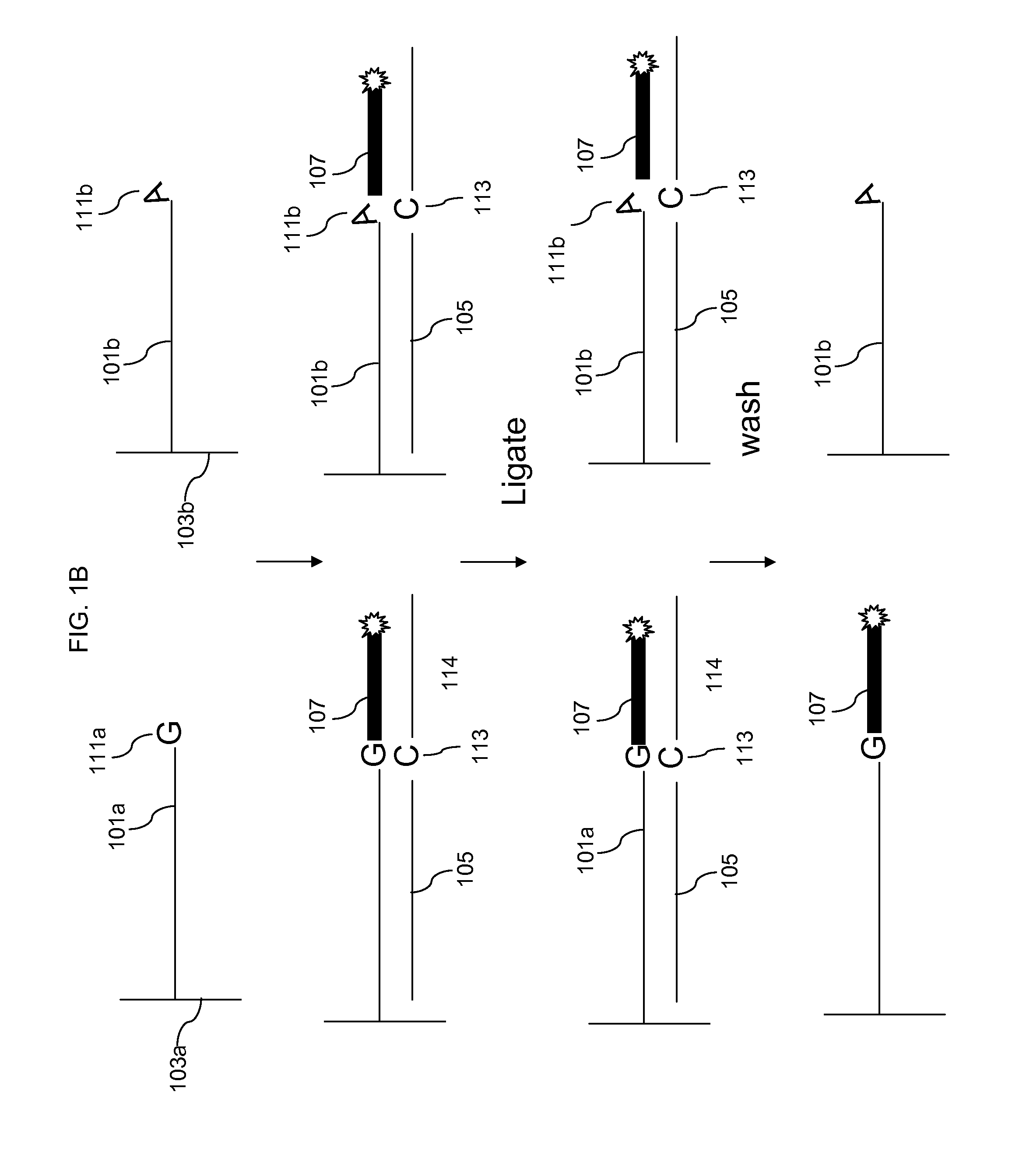Enzymatic methods for genotyping on arrays
a technology arrays, applied in the field of methods for genotyping using arrays of nucleic acid probes, can solve problems such as the complexity of genomes
- Summary
- Abstract
- Description
- Claims
- Application Information
AI Technical Summary
Problems solved by technology
Method used
Image
Examples
example 1
Array Ligation Assay with Base Specific Ligation
[0077]Start with a DNA sample containing pooled purified Chr4 PCR product at about 560 ng / μl. 120 μl Fragment. For each array to be hybridized 3.1 μl Purified PCR product @560 ng / ul, 2 μl Diluted Invitrogen DNase (1:186 dilution), 0.66 μl 10× Fragmentation Buffer, and 0.9 μl water were mixed, for a total of 6.66 μl per array with a DNA concentration of approximately 250 ng / uL. In this example a 40× reaction was set up with 124 μl purified PCR product, 80 μl diluted DNase, 26.4 μl 10× fragmentation buffer and 36 μl water. The reaction was then incubated at 37 C for 11 min, then 95 C for 10 min, and hold at 4 C.
[0078]As a control an aliquot of the fragmented DNA was end labeled with biotin prior to hybridization to the array. Labeling of the control was as follows: 12.5 μl fragmented DNA, 10 μl 5× buffer, 1.5 μl 30 mM DLR, 24 μl water, and 2 μl TdT were mixed for a total reaction volume of 50 μl. The reaction was incubated 20 min at 37 C...
example 2
[0081]The starting DNA was mixed chromosome 4 long range PCR products fragmented as described above. The DNA was hybridized to the ENCODE 5′resequencing arrays and the arrays were washed as described in Example 1. For example, rinse with RT 0.2×, 0.2× wash 37° C. for 30 min.
[0082]Mix 20 μl of 10×E. coli ligase buffer, 8 μl of 500 μM interrogation probe solution, 3 μl 1M NaCl, 4 μl E. coli Ligase and H20 to 200 μl. The basic conditions were as follows. Incubate at room tamp for 3.5 hours on rotator. Wash at 37° C. for 15 min in TE, stain 1, 2, 1 for 100 minutes each and scan. The following oligos were tested in separate reactions as interrogation probes: N8A, N8T, N8C, N8G with 10 min 0.2× wash instead of 30 min, N8G with 2× salt during ligation and N8G with 20 min ligation time instead of 3.5 hours (all oligos were purchased from IDT).
[0083]Table 1 shows a grid of the expected perfect match base in the interrogation probe (row 1) compared to the brightest base (column 1). As expecte...
example 3
[0085]To test 5′ to 3′ synthesis a 5K Tag array was synthesized 5′ to 3′ (reverse to standard 3′ to 5′ synthesis). MeNPOC and LDS were used. The probes were 21 mers. A control hybridization was performed using biotin labeled border probes. The expected hybridization pattern was observed. To test extension on the array, hybridized border oligos were extended with ddUTP under varying conditions. Enzymes tested were Klenow exo- or Sequenase with low or high ddUTP and low or high enzyme concentration. Reactions were at 37° C. The following parameters were also varied as follows: reaction temp from 37° C. to 50° C., DMSO denaturant from 0 to 1-%, start and kill reaction at 50° C., single stranded binding protein included (T4 gen3e 32 or E. coli SSB), magnesium concentration from 0 to 3.5 mM, addition of 0.1 to 2.5 mM spermidine, addition of Na Pyrophosphate from 0.5 to 12.5 mM, enzyme to ddNTP ratio and reaction time.
PUM
| Property | Measurement | Unit |
|---|---|---|
| temperatures | aaaaa | aaaaa |
| temperatures | aaaaa | aaaaa |
| temperature | aaaaa | aaaaa |
Abstract
Description
Claims
Application Information
 Login to View More
Login to View More - R&D
- Intellectual Property
- Life Sciences
- Materials
- Tech Scout
- Unparalleled Data Quality
- Higher Quality Content
- 60% Fewer Hallucinations
Browse by: Latest US Patents, China's latest patents, Technical Efficacy Thesaurus, Application Domain, Technology Topic, Popular Technical Reports.
© 2025 PatSnap. All rights reserved.Legal|Privacy policy|Modern Slavery Act Transparency Statement|Sitemap|About US| Contact US: help@patsnap.com



